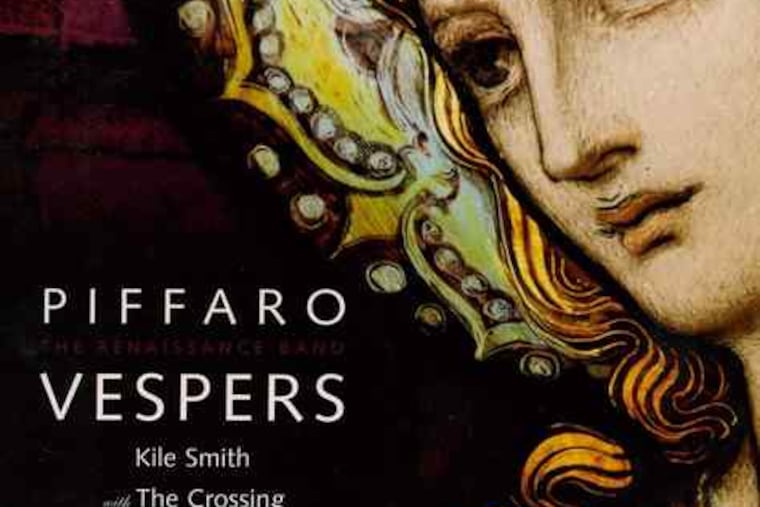Composers' shared idea yields disparate works
Some composers are out to create heaven on earth. Others are resigned to looking for it under some earthly rock. The difference between the two emerges in dramatic relief in an exceptional case of simultaneity: Two composers - roughly the same age, working nearby, both Lutheran, only vaguely aware of each other - experienced creative breakthroughs with conceptually identical pieces, issued on compact disc within weeks of each other.

Some composers are out to create heaven on earth. Others are resigned to looking for it under some earthly rock. The difference between the two emerges in dramatic relief in an exceptional case of simultaneity: Two composers - roughly the same age, working nearby, both Lutheran, only vaguely aware of each other - experienced creative breakthroughs with conceptually identical pieces, issued on compact disc within weeks of each other.
One is Phil Kline, 56, raised in Akron, living in New York, and best known in Philadelphia for his ambient music piece Unsilent Night, performed every Christmas by the Relache ensemble. His new John the Revelator, written for the early-music vocal group Lionheart and the modern-music string quartet Ethel, is just out on the Cantaloupe label and making an unlikely appearance on Billboard magazine's top 20 crossover discs, alongside Sarah Brightman.
The other is Kile Smith, 52, from Pennsauken and based in Philadelphia, who collaborated with the Renaissance music ensemble Piffaro and the modern music choir the Crossing to create his Vespers, just out on the Navona label and selling well at local concerts by both groups.
In both pieces, the composer's Lutheran roots are obvious - Kline with rustic hymns, Smith with more exalted psalms. Points of contact end there.
Most often, you have temperamentally opposite composers accidentally meeting on the same creative ground at the same time, producing works such as Carl Orff's Carmina Burana and Ralph Vaughan Williams' Five Tudor Portraits. In this case, though, Kline and Smith stumbled onto the same idea waiting to happen. Given the prevalence and sophistication of early-music ensembles, contemporary composers would naturally want to write for them, but they aren't about to leave the nurturing modern-music ensembles that can apprehend whatever curveballs they're thrown.
Putting them together, Smith created an ethereal, homogenous synthesis with an immediately identifiable personality; Kline embraces the tension of unlikely juxtapositions with words and music stretching over centuries.
Smith suggests a state of being that many people aspire to: His Vespers is a sanctuary, a refuge from life.
Kline collects shards of spiritual meaning in a wintry, urban landscape. His vocal lines suggest lost human spirits; one movement has wordless vocalization amid animated, motor rhythms from the string quartet. Prayers are stymied by mortal existence and hit a glass ceiling. Traditional means of addressing God are met with silence, though another passage says: "In the thin snow . . . I seem to hear your voice." One section has a Samuel Beckett text full of bleak existential questions: "Where now? Who now? When now?"
Kline accepts darkness as part of a journey into the light, skepticism as part of belief. Basic sections of the Mass (Kyrie, Gloria, etc.) have harmonies recalling Machaut's 14th-century Messe de Notre Dame, suggesting formality and severity, particularly with the imposing voices of the all-male Lionheart. But Kline's creative alchemy is such that he can warm up and personalize these chords in an instant. Arrival and resolution are elusive: A cello moans quietly, a chord has a mildly dissonant interval that feels like nagging uncertainty. He has his digression. The Sanctus has a marvelous pointillistic musical construction with vocal counterpoint recalling doo-wop and the Beach Boys. OK, the Sanctus is often quite cheerful.
Smith, in contrast, is scrupulously relevant. His use of musical antiquity - Piffaro's Renaissance instruments - is about cheery, primary colors. The relative lack of emotional complication might suggest his is the more lightweight piece - underscored by the recording, which is well-performed but has the voices so curiously recessed that the richness of Smith's choral writing can be mistaken for mere prettiness. Listen closely, though, and the spiritual solidity of his music is full of distinctive rewards.
The core of any Vespers service is the Magnificat, and Smith's contains a minor miracle that is characteristic of the piece. Many composers have taken the hard-sell, full-choir approach to this text. Smith's setting is carried mostly by soprano soloists who sing a mid-tempo melody that's almost anti-evangelical in its confident simplicity. Then the melody organically germinates into canonic counterpoint, seeming to step outside itself and into another realm, one easily accessible and there whenever you want it. Eventually, the Magnificat does its duty with a resounding mass-choir affirmation of faith. I could do without that, but the genre more or less demands it.
Together, the two pieces complement each other perfectly. Kline tells you that you're not crazy or amoral when in the thick of your 21st- century angst. Smith tells you that you don't always have to go there, and when you do, his music works far better than aspirin. Maybe the two pieces should be performed together - Kline spelling out the existential problem, Smith coming forth with the solution.